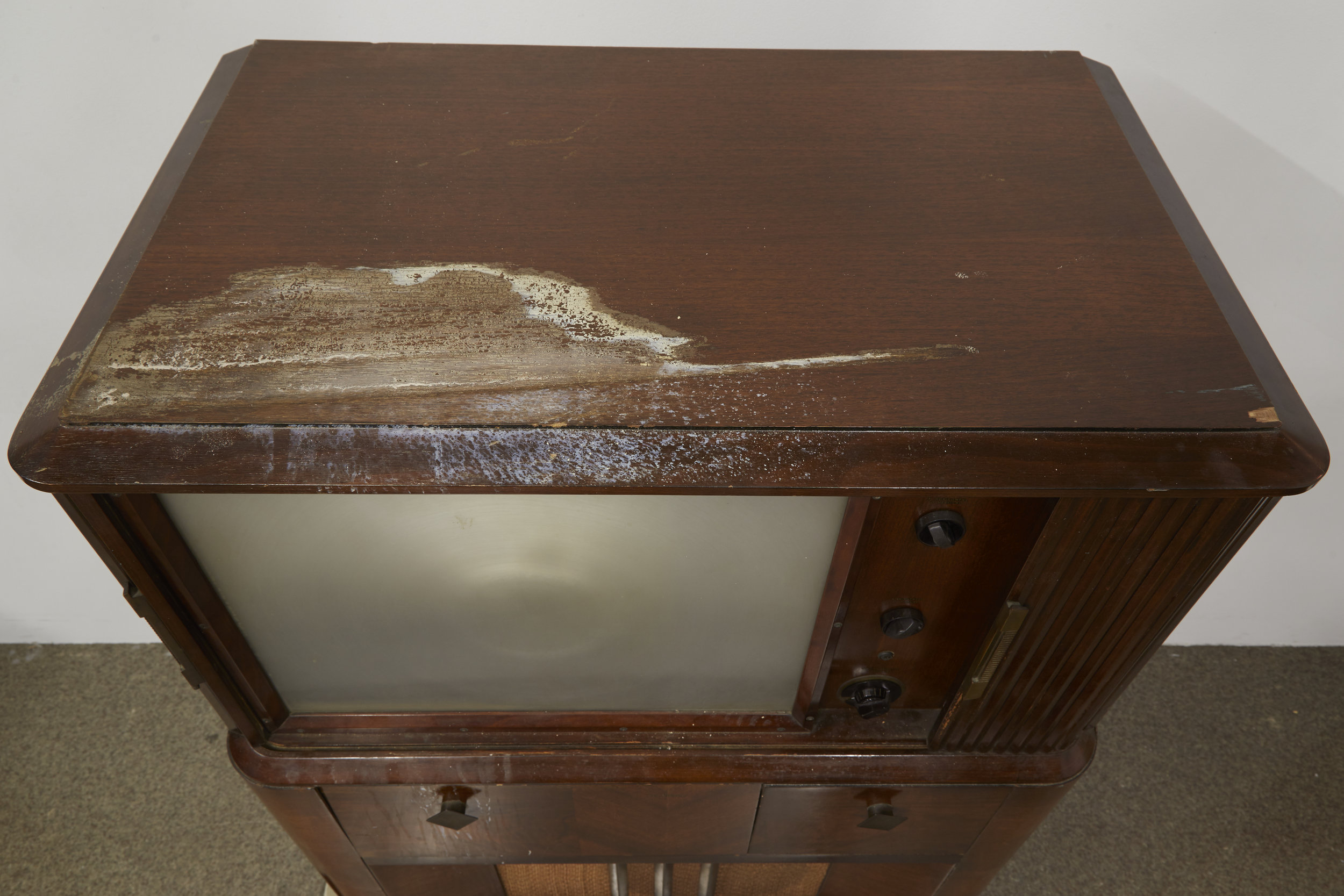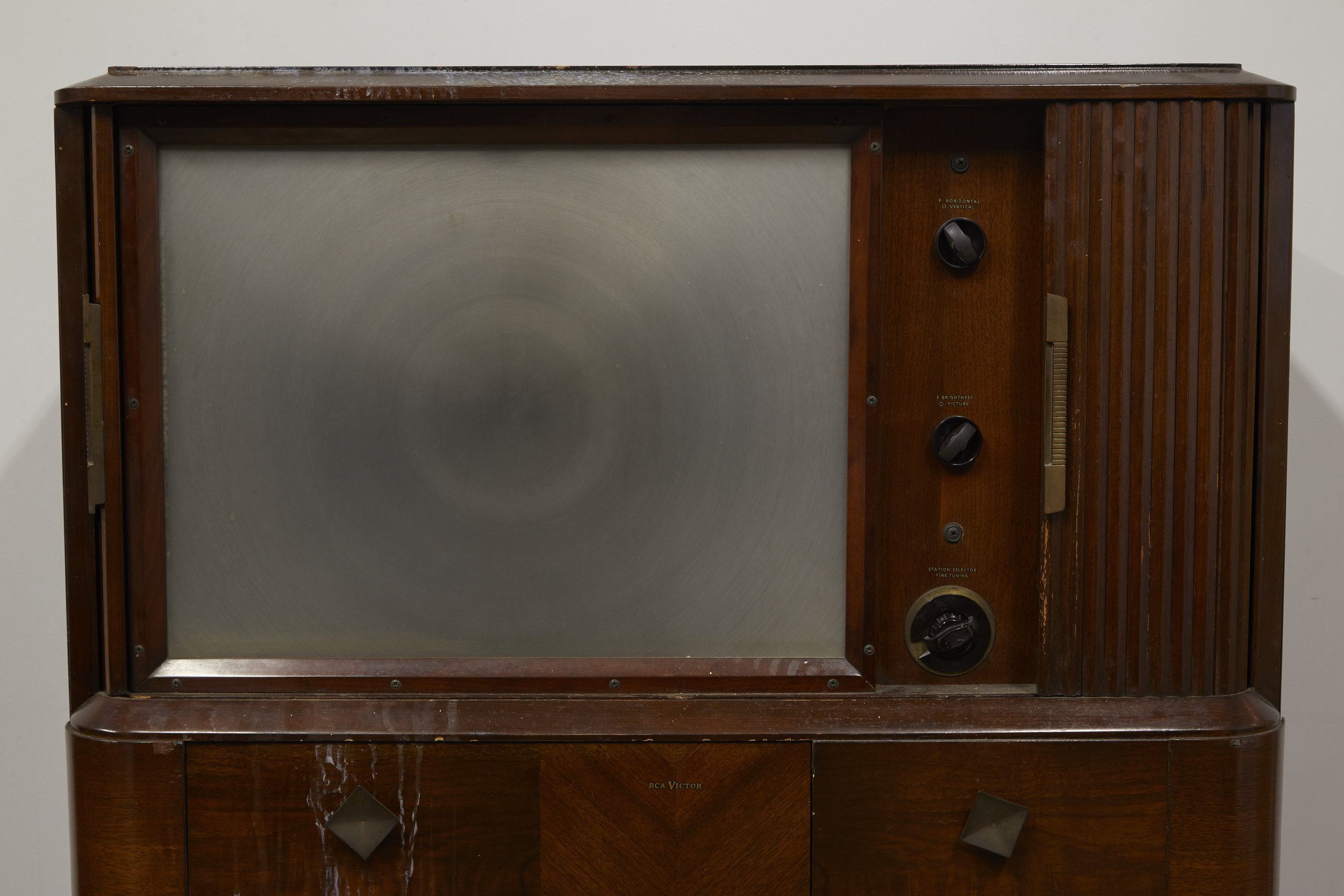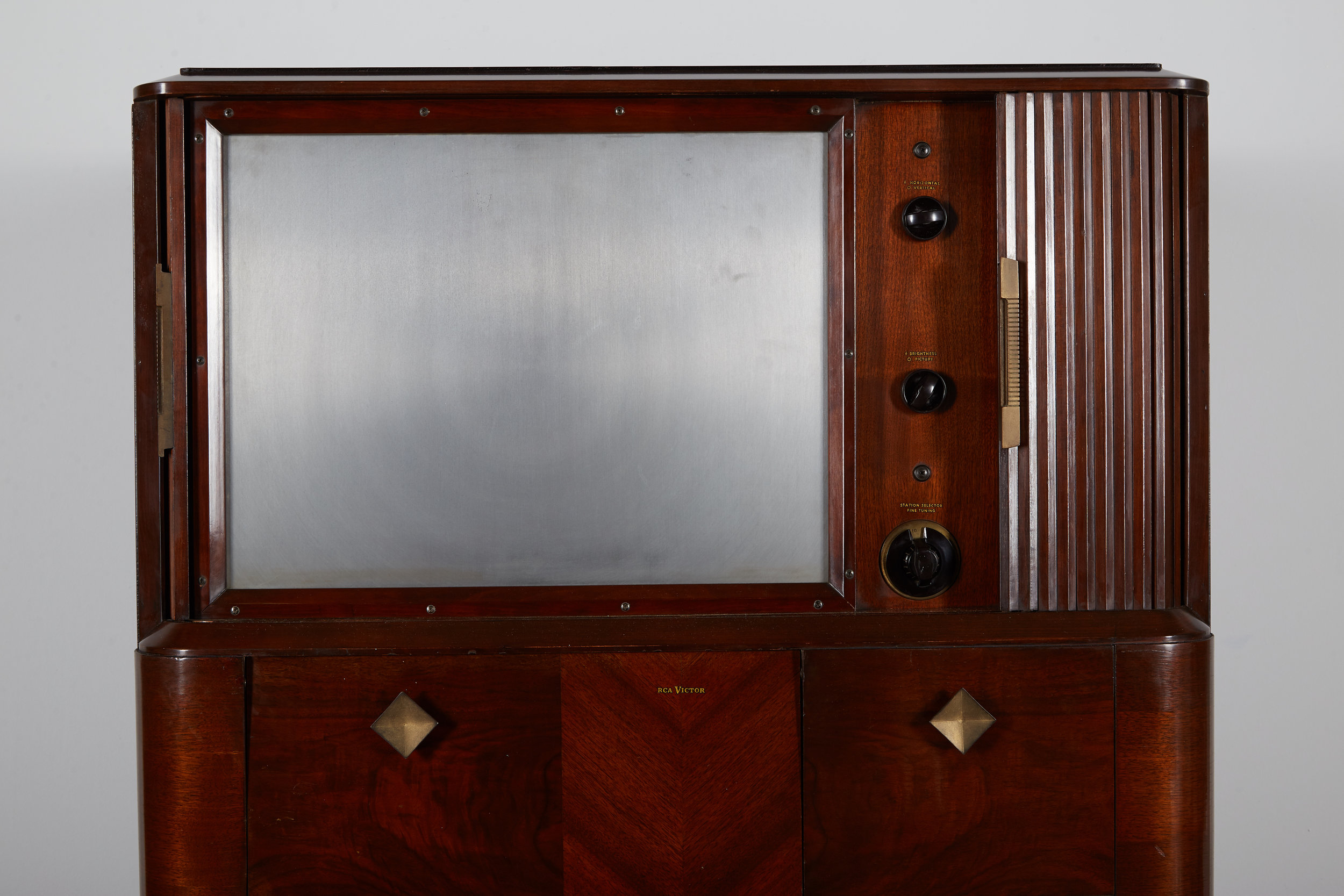The RCA 648PTK television cabinet was announced on August 27, 1947. With 992 units produced in 1947 and 2,500 units in produced in 1948, the television set was a marvel of technology for its time, boasting a 15” x 20” picture, 13 channel coverage, an FM sound system, and Phono input. Marketed as a “striking ‘show-piece,’” the technology was all housed in a sleek, contemporary wooden cabinet, that would “add pride to ownership” for anyone who purchased the piece.
At The Conservation Center, we are always excited to treat pieces that utilize a wide range of our conservators’ skills, and help to preserve important moments in our cultural history. So, when a RCA 648PTK television cabinet came to us from the Children’s Museum of Indianapolis with water damage, we were excited to discuss the treatment options available for the conservation of the piece.
Upon its arrival at The Center, the piece had suffered water damage. There were also multiple deep vertical gouges along the proper left side, and the proper right side had scratches, abrasions, and etched-in fingerprints to the polished surface. There were two areas of loss to the veneer at the proper left top edge and the proper lower right corner. Additionally, there were areas of lifting veneer on the front around the pull stiles. The cabinet exhibited color loss throughout, with the most extensive areas of loss on the bottom foot molding. There was corrosion to the upper edge of the radio face plate and oxidation on the brass decorative speaker uprights. The speaker upholstery was also soiled and had light fraying at the bottom.
To prepare the cabinet for its return to the Children’s Museum of Indianapolis, The Center’s Furniture Department conserved as much of the original patina and finish as possible, while stabilizing the structural elements that had weakened with age and general wear. First, they cleaned the exterior and stabilized the corrosion on the interior components as best as possible. The lifting areas of veneer were consolidated using rabbit skin glue, and the areas of veneer loss and gouging were filled, leveled, and colored to conservation standards. The water damage to the original polished surface was carefully reversed using alcohol, and the surface was then revived with shellac, alcohol, and mineral spirits. Steve Ryan, The Center’s Senior Furniture Conservator noted, “happily, we were able to reverse the water damage successfully while keeping most of the original coloring in those areas intact, so we did not have to do too much to color those parts of the piece.” To complete the treatment, the piece was covered in protective coat of wax.
We are so pleased to have had the opportunity to help save this piece of cultural history for generations of visitors to the Children’s Museum of Indianapolis to explore!
Sources:
http://www.earlytelevision.org/pdf/rca_648ptk_manual.pdf







